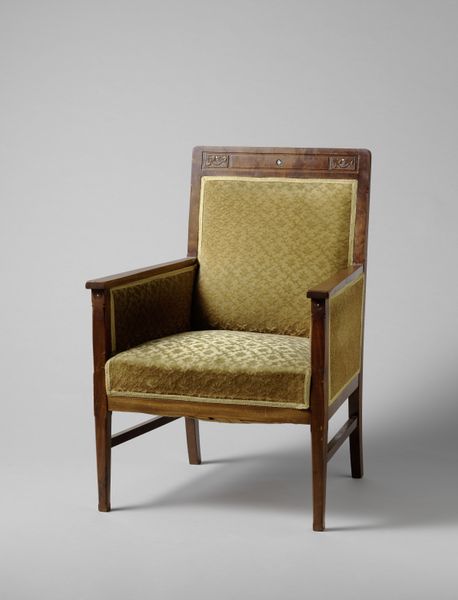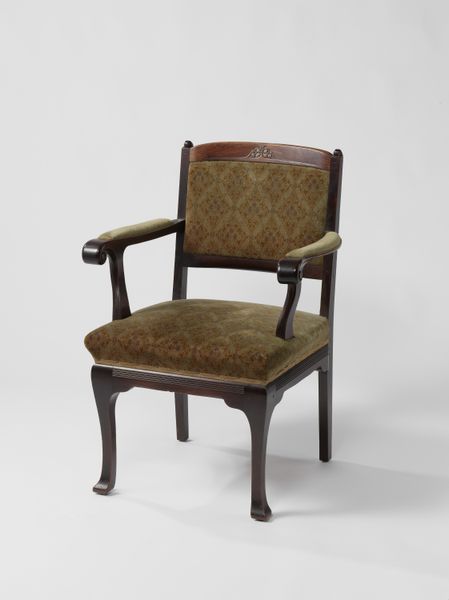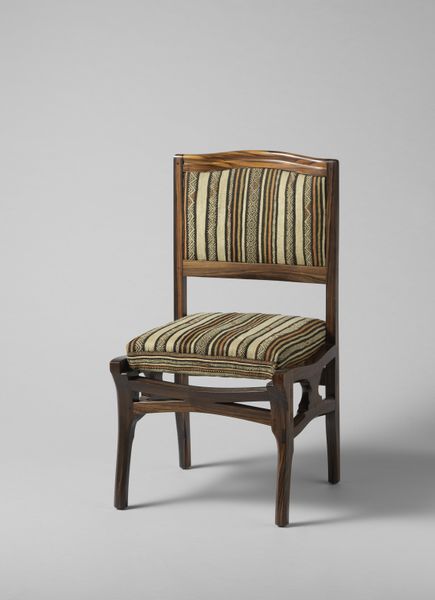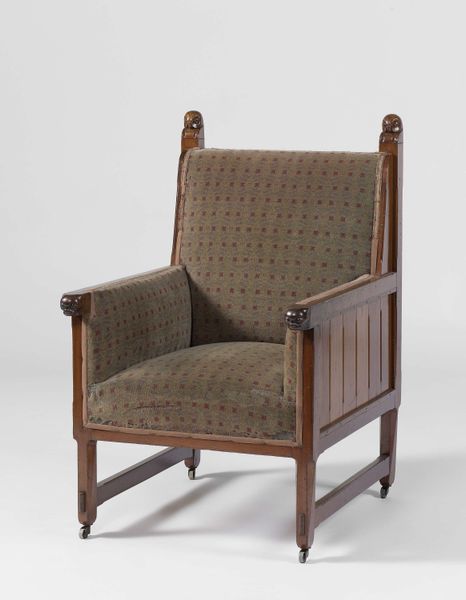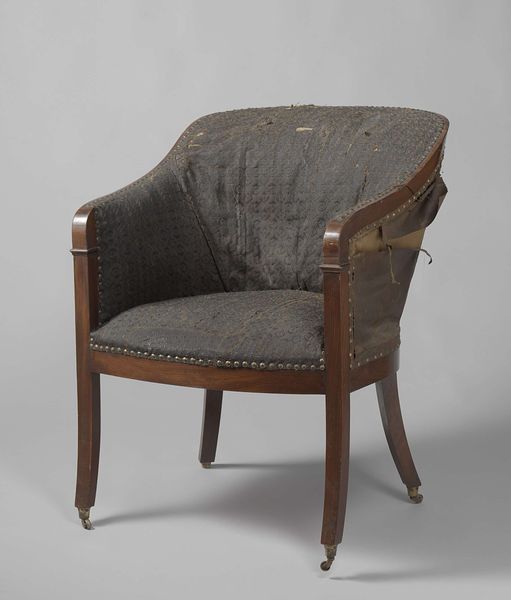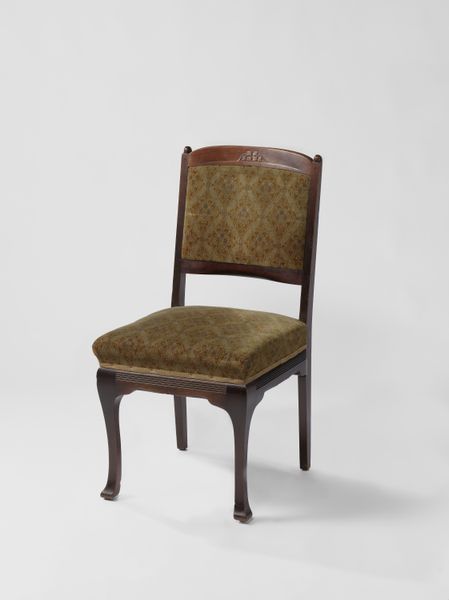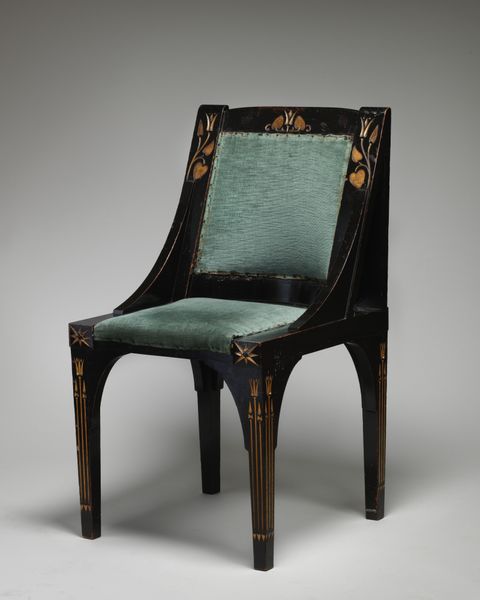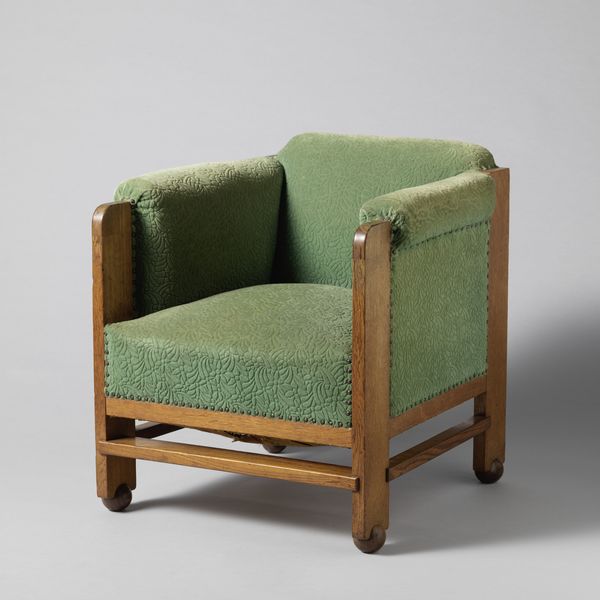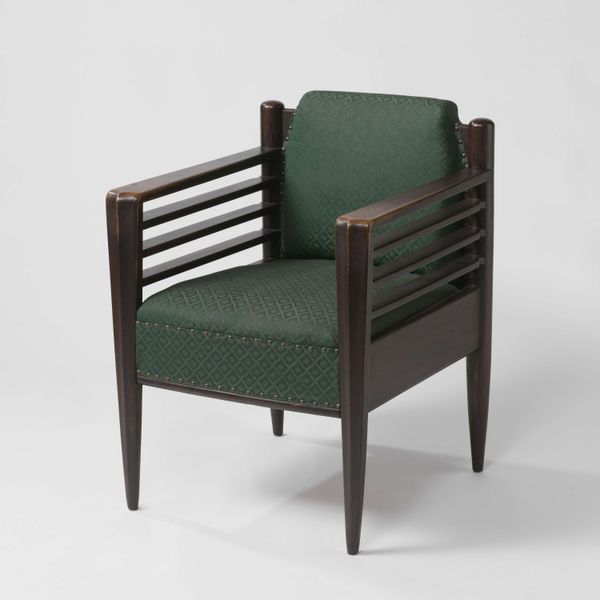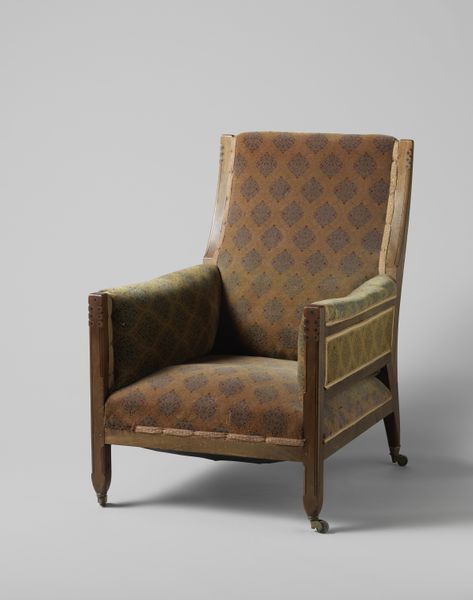
textile, photography, wood
#
still-life-photography
#
arts-&-crafts-movement
#
textile
#
photography
#
wood
#
decorative-art
Dimensions: height 95.0 cm, width 69.5 cm, depth 67.0 cm, height 42.0 cm, width 49.0 cm, depth 50.0 cm, weight 17.4 kg
Copyright: Rijks Museum: Open Domain
Curator: This is a stunning example of decorative art from around 1910: an armchair crafted by Theo Nieuwenhuis, residing here at the Rijksmuseum. Note the “Armstoel bekleed met groenkleurig trijp met bladmotieven”—or Armchair upholstered with green baize with leaf motifs. Editor: My first impression is tranquility. The muted green and simple, geometric design give it a restful, almost monastic feel. It evokes a sense of quiet contemplation. Curator: That resonates strongly with the ethos of the Arts and Crafts movement, to which Nieuwenhuis belonged. This chair, utilizing textiles and wood, exemplifies the movement's principles: a rejection of industrial mass production and a celebration of handcrafted artistry. Editor: Absolutely. The handwork here becomes a statement. The choice of natural motifs, like the leaves in the upholstery, underscores that connection to nature and craft, which can also be viewed as a response to increased industrialization. Who had access to such items? Curator: While advocating for accessible art, the Arts and Crafts aesthetic often found itself catering to a bourgeois clientele able to afford handcrafted items. The movement aspired to elevate design to fine art but faced challenges in achieving true social equity. Editor: The decorative carving and high-quality materials like the wood and baize suggest that this chair wasn’t just about utility but also about displaying a certain status. The beauty of the design becomes entwined with the complexities of social class and economic access. How can an everyday object embody social complexities so potently? Curator: This chair speaks volumes. It represents the values, contradictions, and societal nuances inherent within the Arts and Crafts movement. We see art serving multiple roles—aesthetic, functional, and social—within a specific historical context. Editor: I will definitely look at decorative art with new eyes now, understanding the blend of functionality and symbolic value within its historical and socioeconomic framework.
Comments
No comments
Be the first to comment and join the conversation on the ultimate creative platform.

